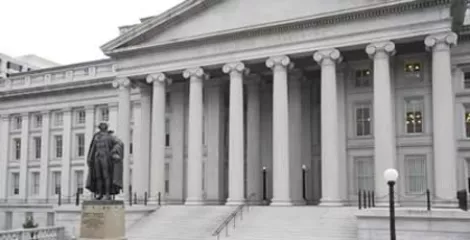- | Financial Markets Financial Markets
- | Expert Commentary Expert Commentary
- |
More Regulations and More Regulators May Not Be the Answer
Just as we should consider the Dodd-Frank reforms carefully before implementing them, we should think critically before giving a regulator more resources. When making this assessment, it is helpful to understand how resources are currently being spent.
Deputy Treasury Secretary Neal Wolin published an op-ed earlier this week calling for full speed ahead on Dodd-Frank reforms. His appeal to haste was accompanied on the Treasury’s blog by a post called “Penny Wise and Pound Foolish,” which discussed the importance of funding the Securities and Exchange Commission (SEC) and Commodity Futures Trading Commission (CFTC) at the levels set forth in the President’s proposed budget. Both of these pieces reflect the view that more regulators and more regulations are always a good use of resources. In fact, more is not always better and can even be worse.
What Deputy Secretary Wolin perceives to be “attempts to delay, weaken or roll back” Dodd-Frank may actually be calls to consider whether it is going to get us where we want to go. On one hand, more regulations are sometimes necessary. For example, after the financial crisis, remaking the regulatory structure around housing finance would have made sense. Dodd-Frank did not do this; it left Fannie Mae and Freddie Mac untouched. On the other hand, more regulations can be problematic. The Deputy Secretary proudly points to Dodd-Frank’s extension of bank-like regulation to non-banks, but doing so will only increase expectations that these firms are within the government safety net. As a result, the market will get even lazier about monitoring and disciplining large financial institutions.
Just as we should consider the Dodd-Frank reforms carefully before implementing them, we should think critically before giving a regulator more resources. When making this assessment, it is helpful to understand how resources are currently being spent. It may turn out that existing regulatory staff are not trained to perform their jobs efficiently and effectively. For example, more than ten SEC staffers looked at Bernie Madoff through several examinations, yet none of them found Madoff’s fraudulent scheme. Would another ten staffers have been the key to discovering the fraud, or could fewer staffers with better training and more effective examination procedures have found it?
In some cases, there may be ways to reallocate existing underutilized resources to alleviate some of the pressure on staffers who are overworked. Dodd-Frank directed the SEC to move its examiners from a self-standing examination office into the divisions that write rules. Instead, the SEC chose to have examiners in its rule-writing divisions and in a separate examination office. Such overlap is costly and fails to achieve Congress’s intended goal of encouraging examiners and rule-writers to learn from one another.
In other cases, a regulator’s misplaced regulatory priorities may be diverting resources from where they are needed. The CFTC has spent a lot of time and resources over the last two years trying to protect sophisticated, institutional participants in the over-the-counter derivatives markets. Meanwhile, two CFTC-regulated firms with retail customers, MF Global and Peregrine Financial, failed. Customers of the failed firms appear to have lost well over a billion dollars.
Looking at specific reforms and specific resource demands critically is more responsible than moving rapidly forward – no questions asked – towards an uncertain and perhaps undesirable goal.
